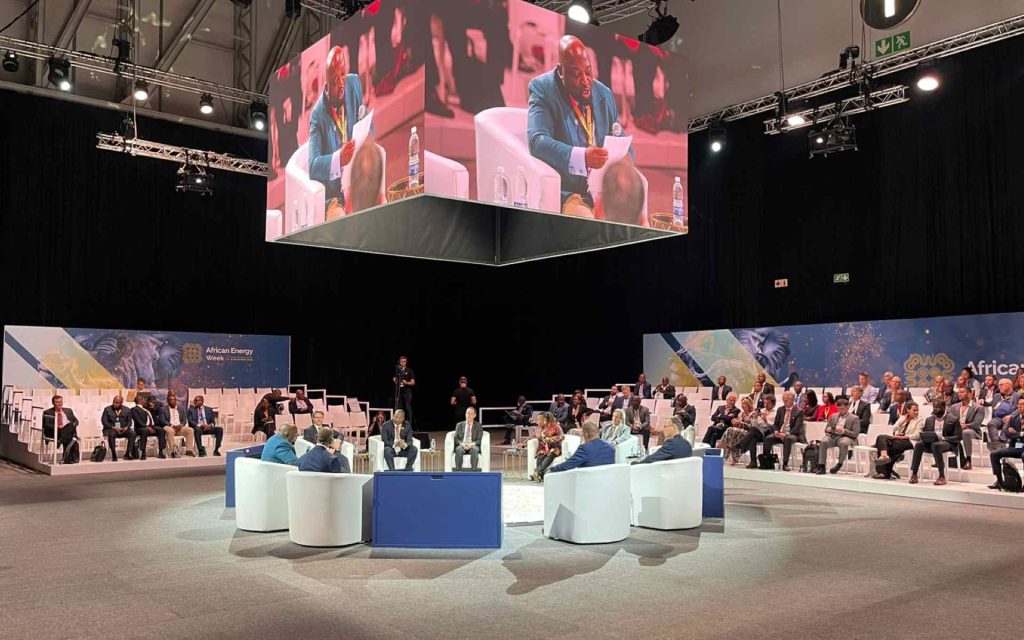AEW 2024: Namibia to Start Crude Production by 2029, But Mopane Could Bring First Oil Closer

Namibia targets first oil production by 2029, but Maggy Shino, Petroleum Commissioner at the Ministry of Mines and Energy, told attendees of an Invest in Namibia Energy session at the African Energy Week (AEW): Invest in African Energies 2024 conference that the appraisal of the Mopane complex in PEL 83 could bring the timeline of first oil much closer.
In a relatively short space of time, Namibia has become one of the world’s hottest offshore oil plays. The country’s Orange Basin has witnessed a string of discoveries since 2022, with over 11 billion barrels of reserves discovered so far. Appraisal drilling by TotalEnergies, Shell and Galp Energia is underway, and the race for first oil production is on.
“With the discoveries that have been made, work has been ongoing in-country to add value to those discoveries and to determine timelines for FID and production. Hopefully, we will be able to make FID next year. First oil is expected in 2029, but with discoveries made by Galp – which has recently spudded their appraisal well – there is a race to see who will get us to FID and first oil quicker,” Shino said.
Namibia’s Ministry of Mines and Energy is working closely with energy companies to fast-track development. Delivering a keynote address ahead of the panel, Tom Alweendo, Minister of Mines and Energy, said that “collaboration is key and will ensure desired outcomes. In Namibia, we are ensuring that our policies are geared towards encouraging investment. We are committed to forging effective collaboration with potential investors and all industry stakeholders.”
NAMCOR, Namibia’s national oil company, is also working closely with international oil companies (IOCs) and independents to unlock the full potential of its offshore market. However, the company has ambitions to move beyond being a passive partner. Ebson Uanguta, Interim Managing Director at NAMCOR, announced that “Within 10-15 years, we should gain operatorship as a company and hopefully we can take over some of the larger fields as operator.”
Robert Bose, CEO of Sintana Energy Inc, believes that “Namibia is not a global hotspot but the global hotspot.” Sintana Energy has strengthened its presence offshore Namibia, having acquired a stake in PEL 79 earlier this year. The company also has a stake in PEL 90 and PEL 83 – home of the Mopane discoveries made in 2024.
“It has been small operators and companies that have driven success that we have seen in Namibia today. Smaller operators have stayed in the country and this has played a key role to where Namibia is today,” he said.
The full scope of Namibia’s offshore resources is yet to be determined. Companies such as TGS support investments offshore through their seismic datasets and legal support. According to Peter Wijnen, TGS Vice President, Business Development: AMME, “TGS is acquiring, imaging and interpreting. We are working and re-working the 2D and 3D data and assessing new investments on the 3D beyond the Orange Basin further north.”
Commenting on the development of the industry so far, Rowland Brown, Co-Founder of Cirrus Fund Managers, emphasized that “We have to recognize that the ministry has done a fantastic job. However, we need to look at the fiscal regime and how the fiscals are expected to be utilized.”
As the pace of oil and gas developments accelerates, Namibia is placing local content at the heart of its energy strategy. According to Ndapwilapo Selma Shimutwikeni, Founder and CEO of Rich Africa Consultancy, “Value-added local content across the entire value chain is important. It has been very intentional in our national policy that local content is a catalyst.”
Dr Marcio Rocha Mello, Founder and CEO of Namibia Energy Corporation, believes that “Namibia has huge potential, but through capacity training, it can realize this. The secret is in capacity building. If you get it right, the future of Namibia is clear.”
Companies across the entire value chain are advancing local content in their respective operations. Miguel Baptista, Managing Director: Central, East and Southern Africa at SLB, says that the company “made a pledge that between 2027 and 2029, its Namibian workforce will comprise 70% Namibians of which 45% are female. We are focused on hiring people for engineering work.”
Similarly, Africa Global Logistics (AGL) is prioritizing local contractors. Koen Rombouts, Managing Director, Southern African Corridor South Africa, Namibia, Botswana, Zambia and South DRC at AGL said that “A 30-year deal was signed for the port in Walvis Bay where we will have operations and a commitment to invest. This development is not only as AGL but with local partners. The warehousing inside the port that we expect to build will be fully locally-contracted.”

